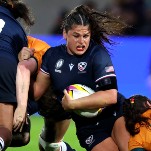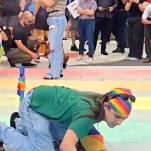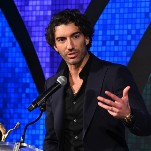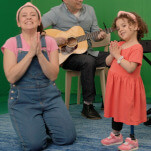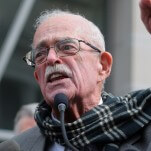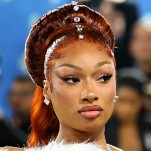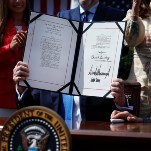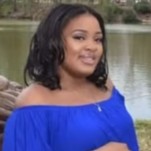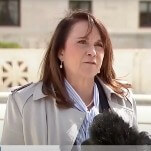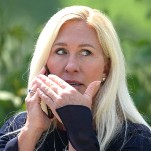The Cost of Being Joyce Maynard: Twenty Years After At Home in the World
CelebritiesAfter I texted Joyce Maynard on a Saturday morning in late July, to make plans to meet for coffee, I realized that she has her read receipts on. I suggested that we meet at a nearby farmers market; she reads my text at 11:59 a.m. and responds right away. Eleven minutes later, she texts to tell me that she beat me there on her bike.
For a second, I feel bad that I don’t have my read receipts on. It’s a commitment to immediacy and transparency—designed, perhaps, with accountability in mind. It’s remarkably on-brand for the 64-year-old Maynard. Twenty years after publishing her memoir At Home in the World, which details how she left Yale University in 1973 to live with J.D. Salinger, Maynard still wants to disclose everything. Her inclination to tell all has earned her a reputation for being an oversharer and has drawn the ire of many since she published At Home in 1998.
When I meet Maynard in Fort Greene, she’s dressed like a J.Crew model, wearing jeans and a striped blue-and-white shirt. Coming from brunch with her son, she is warm and energetic; she insists we sit on the grass to chat. Maynard is going to see Taylor Swift in concert later that night at the MetLife Stadium in East Rutherford, New Jersey, although she admits that she isn’t a huge fan. (A friend, who happens to be friends with Swift’s family, has tickets.) Maynard found Swift’s latest album, Reputation, which tells about the battle that Swift fought and largely lost in the public eye, to be a little one-note. She wasn’t the only one.
To many, Maynard will always be the woman who moved in with J.D. Salinger and had the gall to write a book about it. “If I live another 40 years, I know that my obituary will start out with, you know, ‘When she was young, she slept with Salinger,’” Maynard says in the park.
Salinger and Maynard’s cohabitation lasted less than a year, and it is often mischaracterized as an affair, a label Maynard rejects. “Oh, I had a love affair? No, I did not. I did not have an affair,” she says. “Later, I found out what an affair was, that wasn’t it.” It hardly matters, though, as the label stuck. Publishing At Home in the World has had an outsized effect on Maynard’s reputation. It largely destroyed it, transforming her into a cartoon villain of the publishing world, a caricature of the gabby woman who thoughtlessly wields her pen.
The backlash that Maynard endured since publishing the memoir points to conflicting ideas about what women should say, in what spaces, and at what cost.
It had little, if any, effect on Salinger’s reputation. The backlash that Maynard endured since publishing the memoir—as well as columns and books since then—points to conflicting ideas about what women should say, in what spaces, and at what cost. The reception of her work seems particularly relevant now, especially as women feel increasingly emboldened to speak about the abuses of powerful and respected men. Perhaps if Maynard’s memoir had been published today, the reception would have been different, less caustic or perhaps more cautious. And yet, as early as last year, Maynard’s work still inspires criticism that reflected these anxieties.
What is it about Maynard that makes her such a flashpoint? Her harshest critics bend over backward to declare her self-serving, while her advocates argue that her stories have value. No one seems to suggest it could be a bit of both.
Maynard has always been an ambitious and resourceful writer. As a freshman at Yale, she covered the Miss Teenage New Hampshire for Seventeen magazine, which wanted an “insider’s view,” by convincing the network that aired the pageant to make her a teenage judge. When Seventeen ran a heavily edited and shorter version of her story, Maynard wrote to Lester Markel, an editor at the New York Times in a rage (she had picked his name at random from the masthead).
Would Markel “like me to write an article about what young people are thinking about on college campuses these days?” she recounted in At Home. Attached was a photocopy of her original, unedited story, as well as a pitch: “In which case, I would be uniquely well equipped to tell the readers of the Times what that might be.”
-

-

-

-

-

-

-

-

-

-

-

-

-

-

-

-

-

-

-

-

-

-

-

-

-

-

-

-

-

-

-

-

-

-

-

-

-

-

-

-






